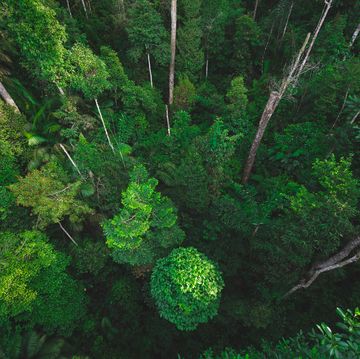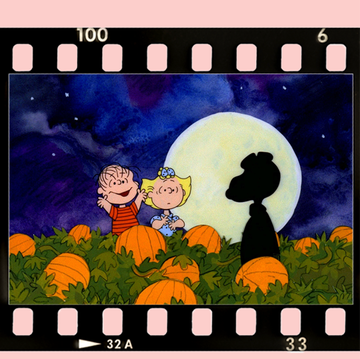While Earth Day, observed annually on April 22, may not be a major holiday that’s widely celebrated outside of classrooms, it’s more than worthy of honoring. After all, without Earth, where would we be? It’s our home and life as we know it wouldn’t exist without it. That’s why it’s super important to preserve and protect the planet as much as possible.
Want to learn more about the third planet from the sun in the solar system? We’ve rounded up some of the best Earth Day facts to enlighten, inspire, and raise awareness.
Earth Day is on April 22 for a reason.
Ever wonder why Earth Day is held on a random day in April? Well, it’s because back at the inception of the Earth Day movement, April 22 fell between spring break and final exams, making it an optimal time for student participation during environmental teach-ins led by Wisconsin junior Senator Gaylord Nelson, his co-chair, Pete McCloskey and activist Denis Hayes.
Environmental teach-ins led to nationwide interest on the intersection of nature, industrialization and human health.
After witnessing the destruction of an oil spill in Santa Barbara, Nelson, McCloskey and Hayes set out with a national staff of 85 to educate the masses on the detrimental effects of industrialization on the environment and human health. After touring the States in 1969, 20 million Americans felt inspired to get involved. They took to the streets to rally for environmental policy.
Earth Day wasn’t always called "Earth Day."
It may be hard to think of anything else, but “Earth Day” didn’t always have such a fitting moniker. In fact, it was originally referred to as an “environmental teach-in.” Doesn’t have the same ring or allure, right? “Earth Day” was coined by advertising writer Julian Koenig in 1970.
Earth Day was first celebrated in 1970.
Thanks to the overwhelming interest in Earth Day rallies, the U.S. government created the Environmental Protection Agency by the end of 1970, and Earth Day became an annual event.
Earth Day was years in the making by the time it debuted.
While Earth Day wasn’t nationally recognized until the ‘70s, a moment in 1962 largely inspired the movement. According to EarthDay.org, the publication of Rachel Carson’s New York Times bestseller Silent Spring in 1962 sparked nationwide interest in environmental issues. The book “raised public awareness and concern for living organisms, the environment, and the inextricable links between pollution and public health,” the site reads.
The first decade of Earth Day was wildly successful.
The principal Earth Day event in 1980, held in Washington. D.C. across from the White House, capped a decade of substantial US environmental legislation, including the Endangered Species Act, Marine Mammal Protection Act, Superfund, Toxics Substances Control Act, the Resource Conservation and Recovery Act, and of course the Clean Air Act and Clean Water Act.
Earth Day became a global initiative in 1990.
Twenty years after the policy-changing rallies in the U.S., Earth Day initiatives went global after Hayes led another eco-friendly campaign. It brought 200 million people in 141 countries together to raise awareness for the environment.
Now, Earth Day is celebrated in almost every country in the world.
According to National Geographic, Earth Day is celebrated annually in 190 countries. The efforts extend far beyond April 22, though. Thanks to the Earth Day Network (EDN), 20,000 partners in 190 countries work to create year-round eco-friendly initiatives, garnering more than one billion participants every year.
Earth Day is one of the most celebrated non-religious holidays.
Unlike many religious holidays, Earth Day garners participation by just about everyone on a global scale. In fact, it's often considered the largest secular day of protest in the world.
Earth Day is bi-partisan.
While there’s a common myth that environmental policy is only valued by liberals, Earth Day was actually created by Nelson, a Democrat, and McCloskey, a Republican congressman with a reputation for being a fiscal conservative and social progressive. Point being: Earth Day — and caring for the environment — shouldn’t be political. It’s something we should all be aligned with.
Every Earth Day has a theme.
While Earth Day is always on April 22, EarthDay.org creates a new theme each year. This year, the theme is Our Power, Our Planet, inviting everyone around the globe to unite behind renewable energy, and to triple the global generation of clean electricity by 2030.
Earth Day has an anthem.
Like many holidays, Earth Day even has a song to help celebrate. The "Earth Anthem" was written in 2013 by poet-diplomat Abhay Kumar. It’s available in eight world languages.
There’s also an unofficial Earth Day flag.
Hoping to put your love of Earth Day on display? Buy a flag! The unofficial Earth Day flag features the Blue Marble, a famous photograph of Earth shot in space in 1972 by the Apollo 17 crew.
In 2016, France set out to end food waste.
Earth Day efforts shed light on over-consumption and needless waste. France leaned into the initiative by passing a law in February 2016 that bans supermarkets from tossing unsold food. Instead, they are to donate the items to charities in need.
In 2018, Indians planted over 50 million trees in 24 hours.
Worldwide environmental efforts inspired people in India to rally together for a Guinness World Record in honor of Earth Day. According to Indian officials, 800,000 people banded together to plant 49.3 million trees in 24 hours on July 11, 2018, nabbing the title for the most trees planted in a single day.
During the pandemic, Earth Day initiatives went digital.
Even a global pandemic wasn’t going to keep nature lovers from celebrating Earth Day. In honor of the 50th anniversary, EarthDay.Org collaborated with a number of youth activists to host Earth Day Live, a three-day livestream that garnered over 100 million viewers.
EarthDay.org partnered with Malaysian organizations to attempt the largest cleanup in Earth Day history.
In 2024, more than 250,000 volunteers from the environmental summit descended on the island of Penang, Malaysia, to not only plant 1.2 million trees, but also took charge of several cleanups to help remove over 1800 pounds of trash and plastic pollution.
Earth Day 2024 sparked massive plastic reduction campaign.
Last year’s Earth Day theme: Planet Vs. Plastics called for a 60% global reduction in plastic production by 2040. In November 2023, to bring public attention to the health threat that microplastics pose, Earthday.org released its report Babies vs. Plastics, which collated some of the latest science on the subject.
These tiny plastic particles pose a growing environmental and potential health threat, as they can accumulate in the environment, enter the food chain, and potentially cause harm to organisms, including humans, through ingestion or inhalation.
Rebecca Norris is a full-time freelance writer living in the Washington, D.C. metro area. Over the past 10+ years, she’s heavily covered a range of lifestyle topics, including travel, home, beauty, style, wellness, and celebrity news. She is a graduate of George Mason University, where she earned a B.A. in Media: Production, Consumption, and Critique, along with a minor in Electronic Journalism. When she's not writing, she can be found strolling with her Jack-Chi, Cash, sipping iced matcha lattes, indulging in delicious cuisine, perusing farmer’s markets and antique sales, collecting colored glass, getting lost within the pages of a book, and exploring new bucket-list cities.
Karla Pope is a longtime writer, editor and blogger with more than two decades of editorial experience. She’s written for a variety of outlets including Good Housekeeping, Woman’s Day, Travel + Leisure, Tripadvisor, People, Parade and more. Her coverage includes travel, lifestyle, entertainment and wellness content. When she's not exploring the world with her family, you can find her curled up on the couch watching a documentary and eating gummy bears.

















